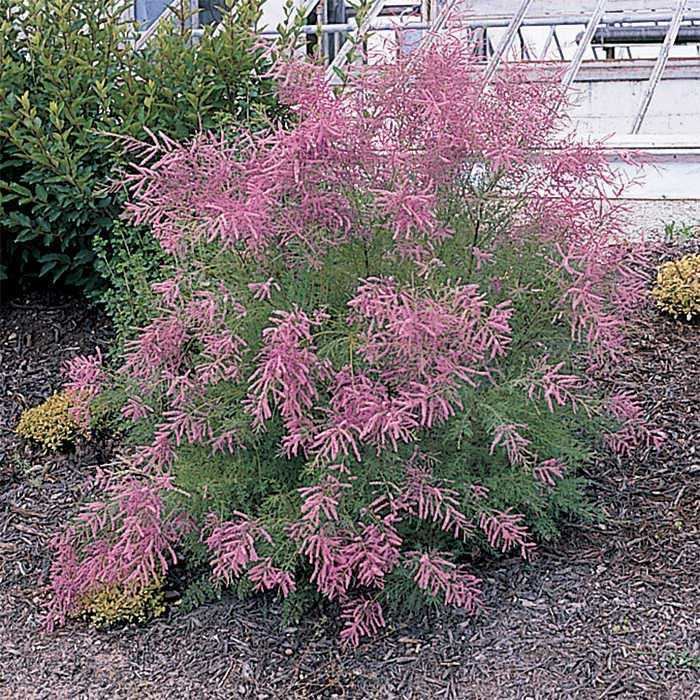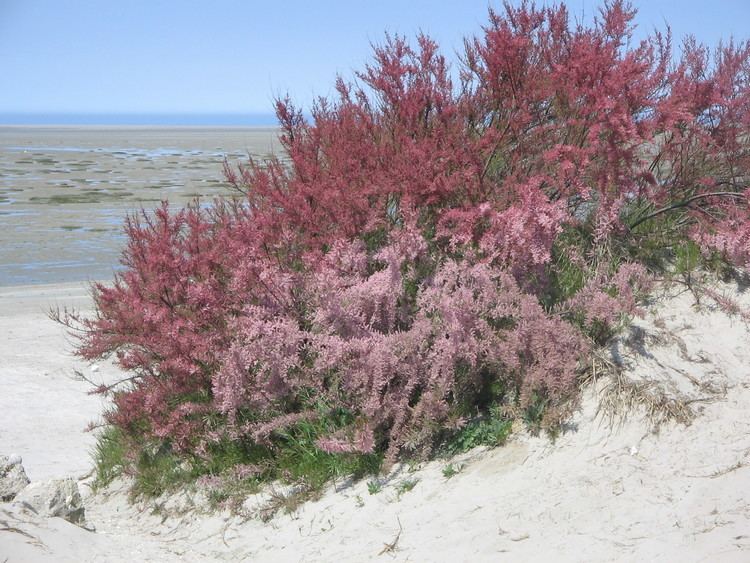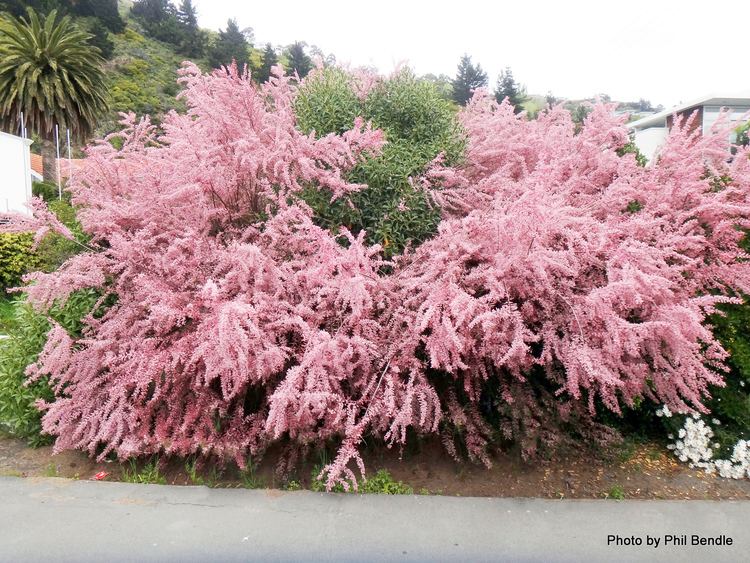Scientific name Tamarix Rank Genus | ||
Lower classifications Tamarix ramosissima, Tamarix gallica, Tamarix parviflora, Tamarix aphylla | ||
Starting a tamarix bonsai from nursery stock aug 2016
The genus Tamarix (tamarisk, salt cedar) is composed of about 50–60 species of flowering plants in the family Tamaricaceae, native to drier areas of Eurasia and Africa. The generic name originated in Latin and may refer to the Tamaris River in Hispania Tarraconensis (Spain).
Contents
- Starting a tamarix bonsai from nursery stock aug 2016
- Tamarix bonsai tree care
- Description
- Reproduction
- Uses
- Invasive species
- Formerly placed here
- Tamarisk in North America
- Controls
- Cultural history
- References

Tamarix bonsai tree care
Description

They are evergreen or deciduous shrubs or trees growing to 1–18 m in height and forming dense thickets. The largest, Tamarix aphylla, is an evergreen tree that can grow to 18 m tall. They usually grow on saline soils, tolerating up to 15,000 ppm soluble salt and can also tolerate alkaline conditions.

Tamarisks are characterized by slender branches and grey-green foliage. The bark of young branches is smooth and reddish brown. As the plants age, the bark becomes bluish-purple, ridged and furrowed.
The leaves are scale-like, 1–2 mm long, and overlap each other along the stem. They are often encrusted with salt secretions.
The pink to white flowers appear in dense masses on 5–10 cm long spikes at branch tips from March to September, though some species (e.g. T. aphylla) tend to flower during the winter.
Reproduction
Tamarix can spread both vegetatively, by adventitious roots or submerged stems, and sexually, by seeds. Each flower can produce thousands of tiny (1 mm diameter) seeds that are contained in a small capsule usually adorned with a tuft of hair that aids in wind dispersal. Seeds can also be dispersed by water. Seedlings require extended periods of soil saturation for establishment. Tamarisk trees are most often propagated by cuttings.
Tamarix species are fire-adapted, and have long tap roots that allow them to intercept deep water tables and exploit natural water resources. They are able to limit competition from other plants by taking up salt from deep ground water, accumulating it in their foliage, and from there depositing it in the surface soil where it builds up concentrations temporarily detrimental to some plants. The salt is washed away during heavy rains.
Tamarix species are used as food plants by the larvae of some Lepidoptera species including Coleophora asthenella which feeds exclusively on T. africana.
Uses
Invasive species
Tamarix ramosissima has naturalized and become a major invasive plant species in parts of the world, such as in the Southwestern United States and Desert Region of California, consuming large amounts of groundwater in riparian and oases habitats due to the density of its stands. The balance and strength of the native flora and fauna are being restored by tamarisk eradication projects using a combination of methods, including manual stem cutting followed by the application of herbicide to the stump, and burning stands of tamarisk, with subsequent low-volume herbicide application to resprouts.
Formerly placed here
Tamarisk in North America
The tamarisk was introduced to the United States as an ornamental shrub, a windbreak, and a shade tree in the early 19th century. In the 1930s, during the Great Depression, tree-planting was used as a tool to fight soil erosion on the Great Plains, and the trees were planted by the millions in the Great Plains Shelterbelt.
Eight species are found in North America. They can be divided into two sub-groups:
Tamarix aphylla (Athel tree), a large evergreen tree, does not sexually reproduce in the local climate and is not considered a seriously invasive species. The Athel tree is commonly used for windbreaks on the edge of agricultural fields and as a shade tree in the deserts of the Southwestern United States.
The second sub-group contains the deciduous tamarisks, which are small shrubby trees, commonly known as "saltcedars." These include Tamarix pentandra, Tamarix tetranda, Tamarix gallica, Tamarix chinensis, Tamarix ramosissima, and Tamarix parvifolia.
These deciduous trees establish themselves in disturbed and undisturbed streams, waterways, bottom lands, banks and drainage washes of natural or artificial water bodies, moist rangelands and pastures, and other areas where seedlings can be exposed to extended periods of saturated soil for establishment.
Invasive species
It is commonly believed that Tamarix disrupts the structure and stability of North American native plant communities and degrades native wildlife habitat, by outcompeting and replacing native plant species, salinizing soils, monopolizing limited sources of moisture, and increasing the frequency, intensity and effect of fires and floods. While it has been shown that individual plants may not consume larger quantities of water than native species, it has also been shown that large dense stands of tamarisk do consume more water than equivalent stands of native cottonwoods. There is an active and ongoing debate as to when the tamarisk can out-compete native plants, and if it is actively displacing native plants or it just taking advantage of disturbance by removal of natives by humans and changes in flood regimes. Research on competition between tamarisk seedlings and co-occurring native trees has found that the seedlings are not competitive over a range of environments, however stands of mature trees effectively prevent native species establishment in the understory, due to low light, elevated salinity, and possibly changes to the soil biota. Box elder (Acer negundo, a native riparian tree) seedlings survive and grow under higher-shade conditions than Tamarix seedlings, and mature Tamarix die after 1-2 years of 98% shade, indicating a pathway for successional replacement of Tamarix by box elder. Anthropogenic activities that preferentially favor tamarisk (such as changes to flooding regimes) are associated with infestation. To date, Tamarix has taken over large sections of riparian ecosystems in the western United States that were once home to native cottonwoods and willows, and are projected by some to spread well beyond the current range.
Controls
There are several ways to deal with pest populations of tamarisk in the United States. The National Park Service has used physically removing the plants, spraying them with herbicides, and introducing northern tamarisk beetles (Diorhabda carinulata) in the National Park System. This has been done in the Dinosaur National Monument in Utah and Colorado along the Green and Yampa Rivers, during the summers of 2006 and 2007. After years of study, the USDA Agricultural Research Service has found that the tamarisk beetles eat only the tamarisk, and starve when there is no more tamarisk available. No other native North American plants have been found to be eaten by the introduced tamarisk beetle. Progress is slow, but proves that containment of the tamarisk is possible in the long term.
Cultural history
In the Epic of Gilgamesh, Gilgamesh's mother, the goddess Ninsun, ceremoniously bathes in a bath of "tamarisk" and soapwort before allowing Gilgamesh and Enkidu to begin their conquest.
In Genesis 21:33, Abraham is recorded to have "planted a tamarisk at Beer-sheba". He had built a well there, earlier.
In 1 Samuel 22:6, Saul is sitting under a tamarisk tree on a hill at Gibeah when he learns that David has returned to Judah.
In Shahnameh, only a tamarisk arrow to the eye can wound the otherwise invincible Prince Esfandiar.
In the Quran 34:16, the people of Saba were punished when "[Allah] converted their two garden (rows) into gardens producing bitter fruit and tamarisks...".
In the Old Testament, Saul's bones are buried under a tamarisk tree in Jabesh.
In Egyptian mythology, the body of Osiris is hidden for a time in a tamarisk tree in Byblos, until it was retrieved by Isis. A reference to this is also made in the computer game, Age of Mythology, in which the head of Osiris is said to be hidden inside the trunk of a great tamarisk tree.
Wedgwood made a "Tamarisk" China pattern.
According to the New Larousse Encyclopedia of Mythology, the tamarisk plant is a favorite of the Greek god Apollo.
